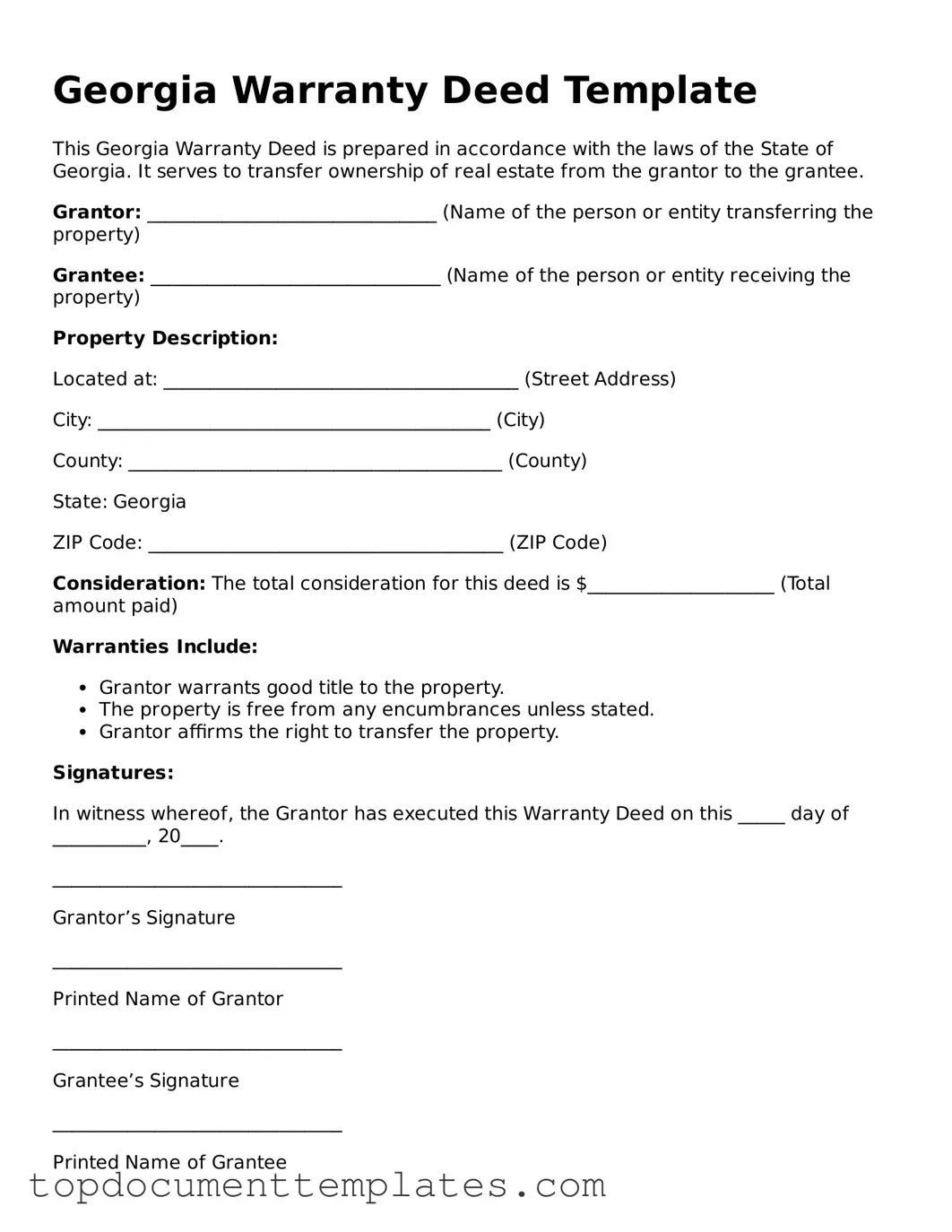When it comes to real estate transactions in Georgia, understanding the Georgia Deed form is essential for both buyers and sellers. This important document serves as the official record of property ownership transfer, ensuring that the rights of the new owner are legally recognized. The form includes vital information such as the names of the parties involved, a detailed description of the property, and the type of deed being used, whether it's a warranty deed, quitclaim deed, or another variant. Additionally, the Georgia Deed form requires signatures from both the grantor and grantee, along with a notary acknowledgment to validate the transaction. By grasping the key elements of this form, individuals can navigate the complexities of property transfers with confidence and clarity, making informed decisions that protect their interests and facilitate smooth real estate dealings.
